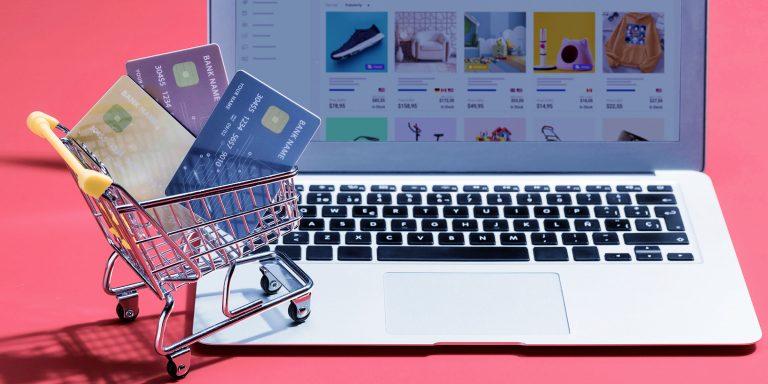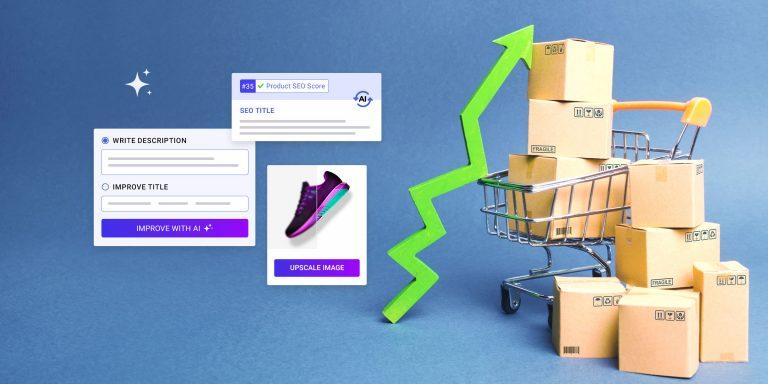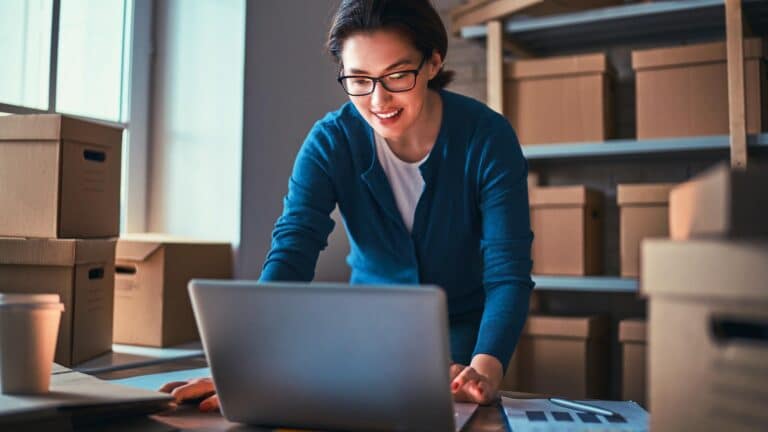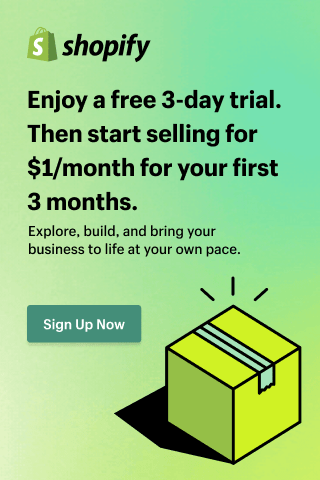Shopify has become one of the most popular platforms for entrepreneurs looking to start a dropshipping business, and that comes as no surprise. With its user-friendly interface, powerful integrations, and extensive resources, Shopify makes it easier than ever to get a store up and running without the hassle of managing inventory or worrying about shipping logistics.
If you’re ready to dive into this exciting ecommerce model, this guide will walk you through how Shopify dropshipping works and how to get started step by step.
Table of Contents
What is Shopify dropshipping?
Most of you probably know this, but we still want to make sure this is clear right from the start. Dropshipping is a business model where you sell products online without having to buy or hold inventory. When a customer purchases a product from your Shopify store, the order is automatically sent to a third-party supplier (often a wholesaler or manufacturer) who then ships the product directly to the customer. You act as the middleman, handling the storefront and marketing while your supplier handles the logistics.
So, you see, this model eliminates the need for upfront inventory investment, warehousing, and fulfillment hassles, making it an attractive option for anyone looking to start an ecommerce business without high startup costs.
Read more: 44 Most Popular Questions About Dropshipping
Why choose Shopify for dropshipping?
While there are several platforms available for dropshipping, each with its own strengths, Shopify consistently stands out as a top choice for entrepreneurs looking to launch a hassle-free dropshipping business.
At the moment WooCommerce currently powers 27.86% of dropshipping websites, and Squarespace comes in second with 21%, Shopify holds a respectable share at 11.8%. While this number might seem lower compared to WooCommerce, it’s important to remember that WooCommerce is a WordPress plugin, and WordPress itself powers 36% to 42% of the world’s websites.
Despite this, Shopify remains one of the simplest and most efficient platforms for dropshipping. Its user-friendly interface, seamless integrations, and extensive resources make it an ideal choice for entrepreneurs who want to set up their business with minimal upfront investment.
Here are some of the reasons we believe Shopify is a great platform for dropshipping:
- Ease of use: Shopify makes it incredibly easy to set up a professional-looking online store with no coding experience. Its drag-and-drop store builder allows you to customize your storefront, upload product images, and manage orders effortlessly.
- Seamless integrations: Shopify integrates with many popular dropshipping apps such as AppScenic or Printify, allowing you to import products directly into your store and manage your inventory with just a few clicks.
- Scalability: Whether you’re just starting or looking to scale your business, Shopify offers various plans to suit your needs. Its robust infrastructure can handle small shops and large ecommerce enterprises alike.
- Secure payment options: Shopify provides integrated payment gateways like Shopify Payments, PayPal, and Stripe, making it easy for your customers to purchase from your store.
- Marketing tools: Shopify offers built-in marketing features such as SEO optimization, abandoned cart recovery, and email marketing tools to help you attract and retain customers.
In case you want more proof Shopify can be the best choice for dropshippers, check out these 15 most successful Shopify dropshipping stores. Maybe their story will inspire you to start your own journey.
Pros and cons of Shopify dropshipping
Like any business model, Shopify dropshipping has its pros and cons. Understanding these will help you make informed decisions as you start your journey.
Shopify pros
- Low startup costs: You don’t need to invest in inventory, making it one of the most affordable ways to start a business.
- No need for storage: Since suppliers handle all warehousing and shipping, there’s no need to manage physical inventory or deal with logistical nightmares.
- Flexibility: You can manage your Shopify dropshipping store from anywhere, as long as you have an internet connection.
- Automated processes: Shopify apps streamline inventory management, product sourcing, and fulfillment, saving you time and energy.
- Wide selection of products: You can choose from millions of products to sell in your store, and you’re not limited by physical inventory constraints.
Shopify cons
- Lower profit margins: Dropshipping generally has thinner profit margins compared to traditional retail. You’re dependent on suppliers for pricing, and any price increases may cut into your profits.
- Shipping times: Depending on the supplier, shipping times can be long, especially if products are sourced from overseas. Delayed shipping can result in poor customer experiences.
- Lack of control: Since you don’t handle the products directly, you have less control over the quality, packaging, and shipping of the items. Poor performance from a supplier can reflect poorly on your business.
How profitable is Shopify dropshipping?
Shopify dropshipping can be a highly profitable business model when approached with the right strategies. According to Shopify, most dropshippers on the platform make between $1,000 and $2,000 per month on average. However, with dedication, effective marketing, and solid product choices, some successful store owners have scaled their businesses to earn over $100,000 annually. While these numbers are enticing, the true profitability of a Shopify dropshipping store depends on several factors.
One key element that affects your profit margin is the cost of the products you’re selling. While quality products may command a slightly higher price from suppliers, you’ll need to carefully mark up the prices to maintain healthy profit margins. Balancing this is crucial, if the markup is too high, you may drive customers away, but if it’s too low, your profits will suffer.
Fortunately, Shopify dropshipping eliminates many of the traditional costs associated with ecommerce, such as manufacturing, warehousing, and inventory management. This allows store owners to operate without hefty overhead expenses and focus more on creating value for their customers through branding and marketing.

A significant aspect of maximizing profits in Shopify dropshipping is digital marketing. Investing in email marketing, social media advertising, and search engine optimization (SEO) can significantly boost brand awareness and drive more traffic to your store. Effective marketing campaigns can help potential customers familiarize themselves with your products and increase conversions. Additionally, offering trending or niche products that resonate with your audience can set your Shopify store apart, leading to increased sales and long-term profitability.
In summary, while the profitability of a Shopify dropshipping business varies, its low startup costs combined with effective marketing and product sourcing strategies make it a highly attractive and scalable option for those looking to generate significant income.
Read more: The True Cost of Dropshipping – What Nobody Tells You
How Shopify dropshipping works
Now that you know why Shopify is a great platform, let’s dive into how the dropshipping model works on Shopify.
Set up your Shopify store
The first step in launching a dropshipping business is creating a Shopify store. Shopify offers a user-friendly platform, and setting up a store typically takes a few hours.
Choose a suitable theme, customize your store’s design, and add essential pages such as product listings, an About Us page, contact information, and policies (refunds, shipping, etc.). Your store’s branding should reflect the products you plan to sell and connect with your target audience.
Choose a dropshipping app
Once your store is up and running, the next step is to find products to sell. This is where dropshipping tools and platforms like AppScenic come in handy. With Shopify, you can integrate apps like AppScenic, to source products from suppliers located around the world. These tools make it easy to browse through hundreds of thousands of products, ranging from fashion and electronics to home goods and niche items.
The key to success here is picking products with high demand but low competition. You can use market research tools to help you discover trending products and niche opportunities. Additionally, consider customer reviews, the quality of the products, shipping times, and the reliability of the suppliers when selecting items for your store.
Read more: 10 Best Trending Products To Dropship In 2024
Import products
After selecting the products you want to sell, you can import them into your Shopify store with a few clicks. Apps like AppScenic allow you to easily import product listings, descriptions, and images directly to your Shopify store without any manual work (check our video below).
If you use our app AppScenic, use filters like price, shipping time, and supplier location to find the best products. This makes product management seamless, and you can start showcasing these products in your store immediately.
It’s important to customize the product listings to match your brand. This includes optimizing product titles, descriptions, and images to appeal to your target audience. The better you present your products, the more likely they will attract potential customers.
If you use AppScenic, you will also have access to our new AI-powered tool – Description & Images! This will help you create compelling and high-converting product titles and descriptions, and enhance your images up to 4 times their original resolution. Have a look below to check how easily you can use this tool on our platform.
Set your pricing and margins
To make a profit, you’ll need to carefully price your products. The difference between the cost of the product (what the supplier charges you) and the price you sell it for will determine your profit margin. A general rule is to aim for a 30% to 50% markup on the supplier’s cost.
For example, if a product costs $10 from the supplier, you could sell it for $15 to $20, depending on the product’s perceived value and the competition. Tools like Shopify’s pricing calculators can help you determine the ideal price point for your products.
Optimize for SEO
Shopify offers various tools for search engine optimization (SEO), which is essential for driving organic traffic to your store. Be sure to add relevant keywords to your product titles, meta descriptions, and image alt texts to improve your chances of ranking higher on Google.
On AppScenic we have a tool for that too! Our new SEO AI tool can handle everything from titles and descriptions to generating crucial SEO data like keywords, search volumes, and trends.
Launch your store and start marketing
Once your store is fully stocked and ready to go, it’s time to launch and promote it. Digital marketing is critical to the success of your dropshipping business, as driving traffic to your store is the only way to make sales. Besides SEO and writing a blog, you should invest in online advertising strategies like:
- Facebook and Instagram ads: These platforms allow you to target specific demographics and interests, making it easier to reach customers who are more likely to buy from your store. These platforms work better for low-ticket products or visually appealing items.
- Google ads: Google Shopping ads are an excellent way to showcase your products at the top of search results. These ads work better for high-ticket items and for an audience who already knows what they are looking for on Google.
- Email marketing: Building an email list is another great way to maintain communication with potential customers and offer them promotions.
- Social Media Marketing: Engage with your audience through Instagram, Facebook, or TikTok, depending on your niche. Creating organic content that resonates with your target market can drive traffic to your store.
Handle orders from customers
Once your store gains visibility, customers will start placing orders. When a customer purchases an item from your Shopify store, the order is automatically sent to the supplier. You don’t need to worry about inventory or packaging because your supplier will take care of everything. Most Shopify dropshipping apps, like AppScenic, have automated order processing, which speeds up fulfillment and ensures customer satisfaction.
The customer receives confirmation of their order from your Shopify store, and all you have to do is monitor the sales dashboard and provide customer service if needed.
Suppliers handle fulfillment and shipping
After the supplier receives the order from your store, they take care of everything from packaging to shipping the product directly to your customer. The order tracking information will be sent to you, which you can then share with your customer.
Since you don’t handle the physical products, it’s essential to partner with reliable suppliers who offer fast shipping and quality packaging. Customers expect a smooth buying experience, and delays in shipping or poor packaging can lead to negative reviews, which can hurt your business.
Customer service and handling returns
Even though you don’t manage the fulfillment, providing excellent customer service is essential to your store’s success. You’ll be responsible for answering customer inquiries, tracking orders, and handling any returns or refunds. Shopify provides integrations for customer service tools, helping you manage communications effectively.
Make sure you have clear return and refund policies in place. While dropshipping suppliers usually handle product returns, it’s your responsibility to communicate this to your customers and maintain a positive shopping experience.
How to succeed with Shopify dropshipping
Success in Shopify dropshipping doesn’t happen overnight. It takes time, strategy, and consistent effort. Here are a few tips to help you thrive:
1. Focus on niche products
Instead of trying to sell everything to everyone, focus on a specific niche. Whether it’s eco-friendly home products, tech gadgets, or pet supplies, having a niche allows you to target a more focused audience and reduce competition.
Here is our series about top niches to dropship, where we explore niches like jewelry, electronics or toys. Additionally, you can watch the video below on why is so important to be niche-specific in dropshipping.
2. Test and scale
Don’t be afraid to experiment with different products and marketing strategies. Run small test campaigns to see what works, then scale the winners. Shopify’s analytics tools can help you track what’s selling and where to focus your efforts.
3. Build a brand
One of the mistakes many dropshippers make is failing to build a brand. You want your store to look legitimate and trustworthy. Invest in professional design elements like a custom logo, unique product descriptions, and excellent customer service. Watch our video below on the steps to take to create a brand in dropshipping.
4. Use multiple marketing channels
Don’t rely on one marketing channel. Use social media, influencer marketing, email campaigns, and paid ads to reach a wider audience. Shopify’s built-in tools make it easy to run ad campaigns on Facebook, Google, and Instagram.
5. Offer excellent customer support
Although you don’t control the shipping process, providing excellent customer service can help maintain customer satisfaction. Use Shopify apps like Tidio or Zendesk to keep communication open with your customers.
Conclusion
Shopify dropshipping provides a simple, cost-effective way for anyone who wants to enter the ecommerce world without having to manage inventory. By choosing the right products, partnering with reliable suppliers, and optimizing your marketing efforts, you can build a successful Shopify dropshipping business.
While it may take time to see significant profits, with the right approach, dropshipping can become a profitable and rewarding business.











